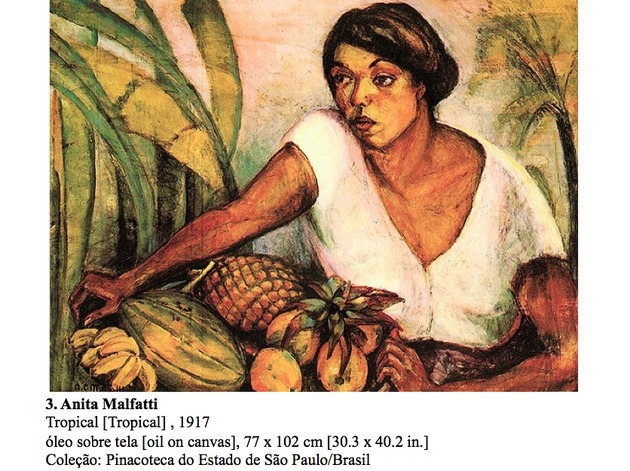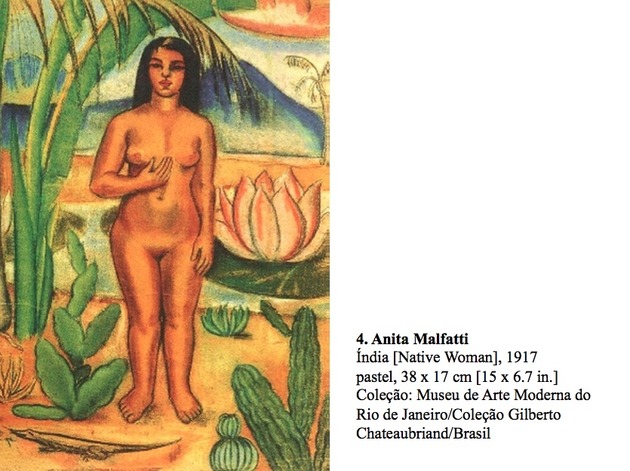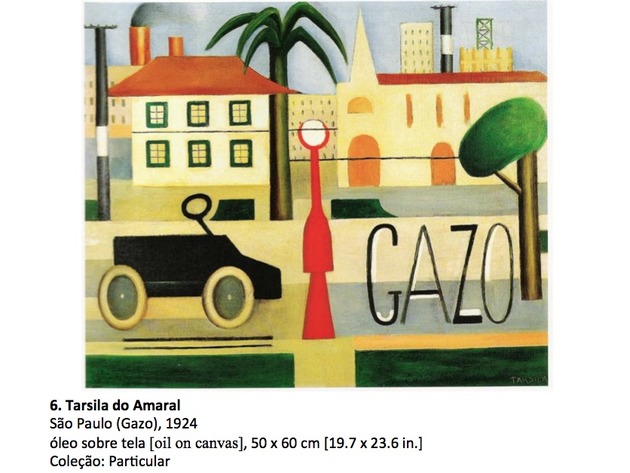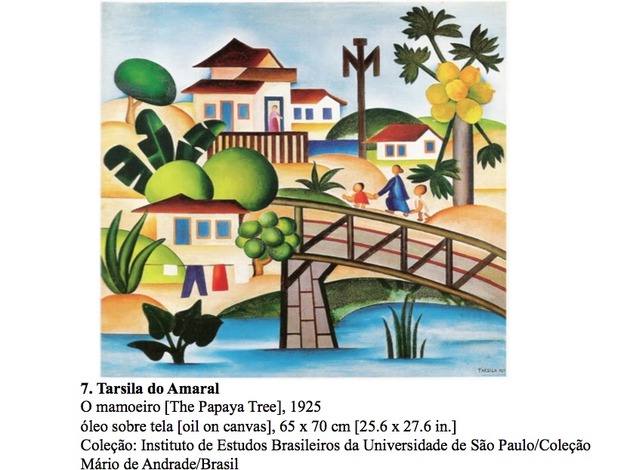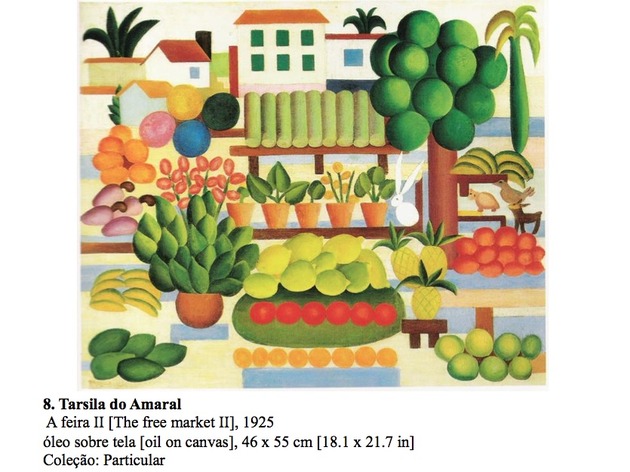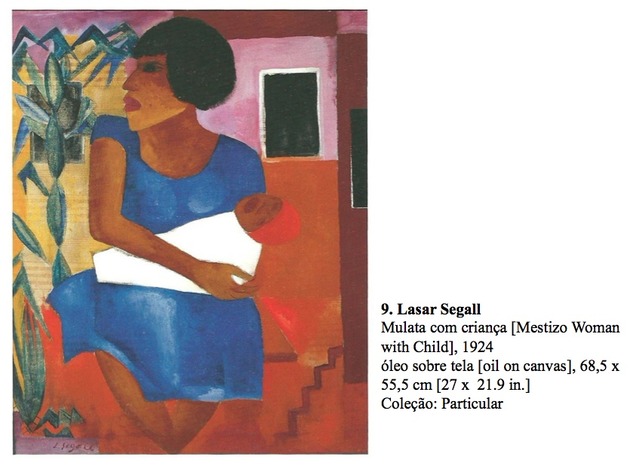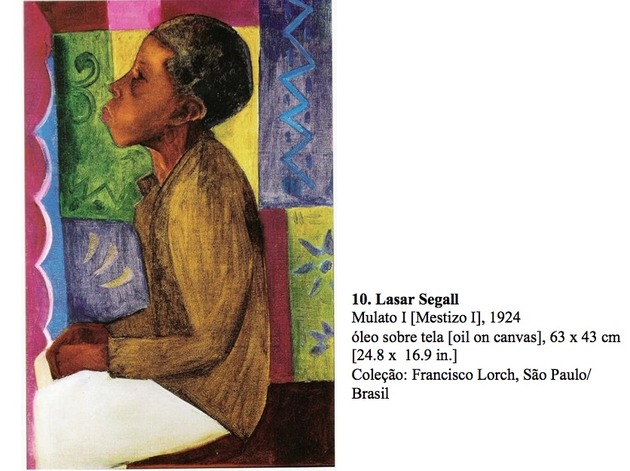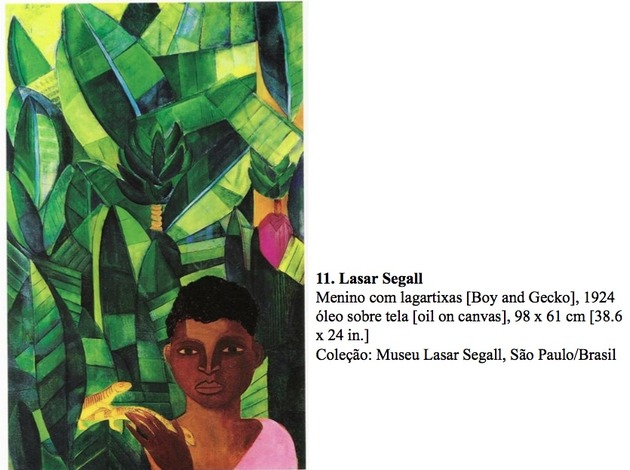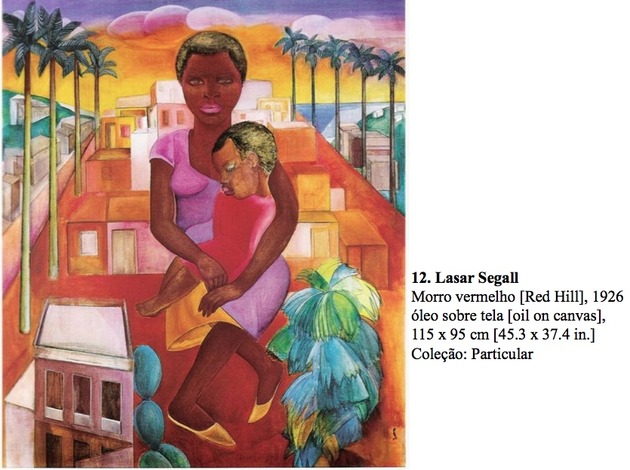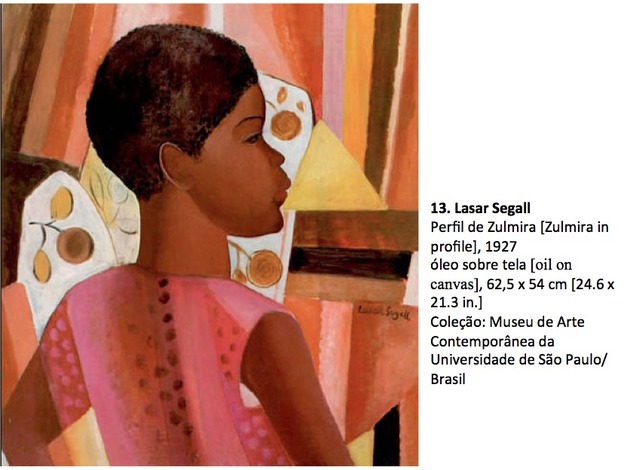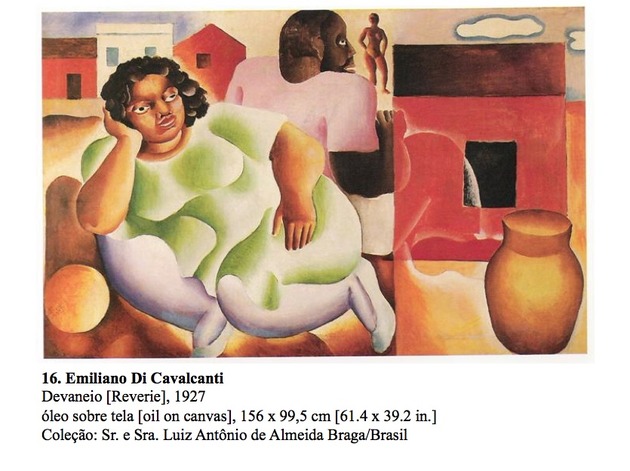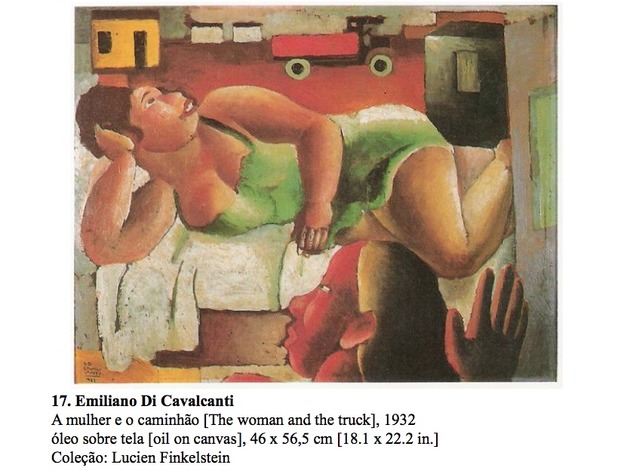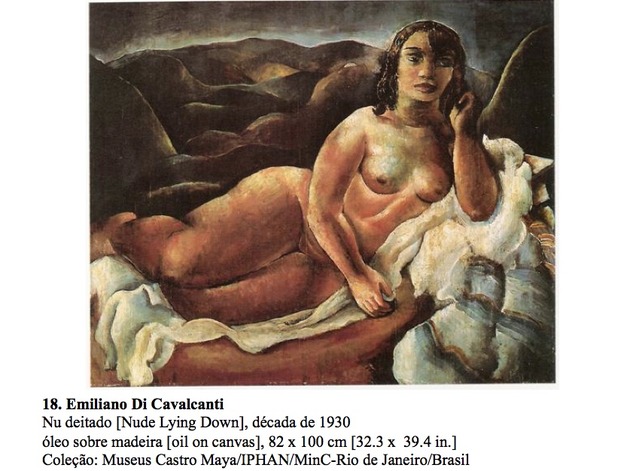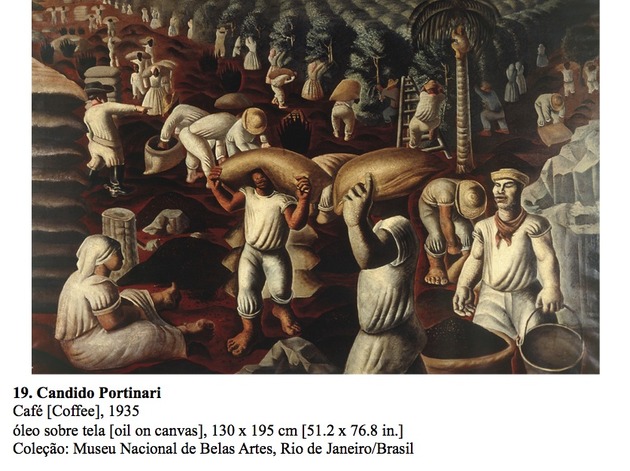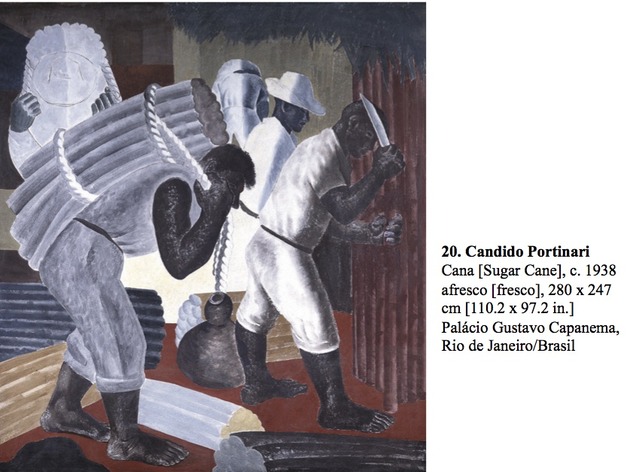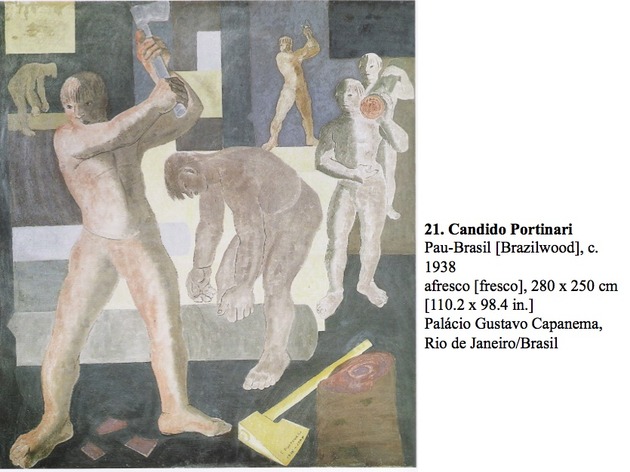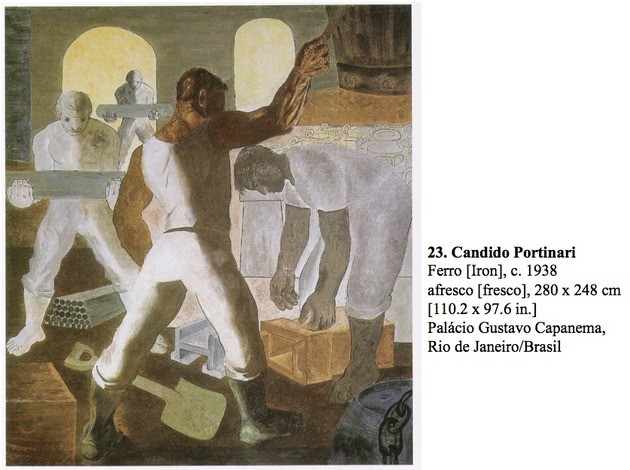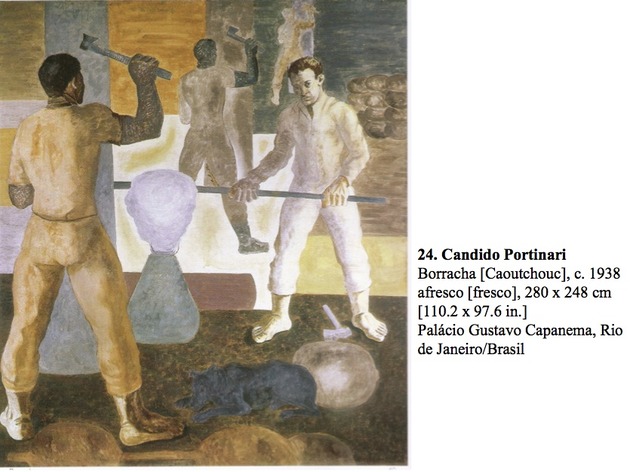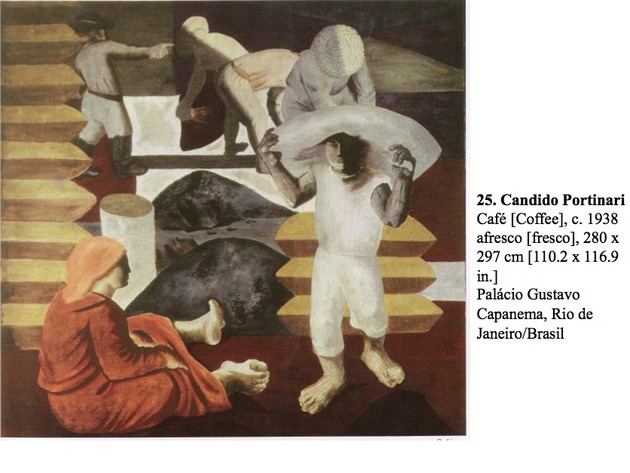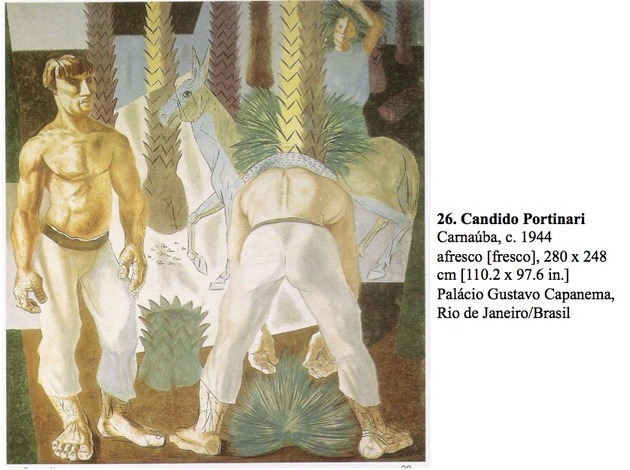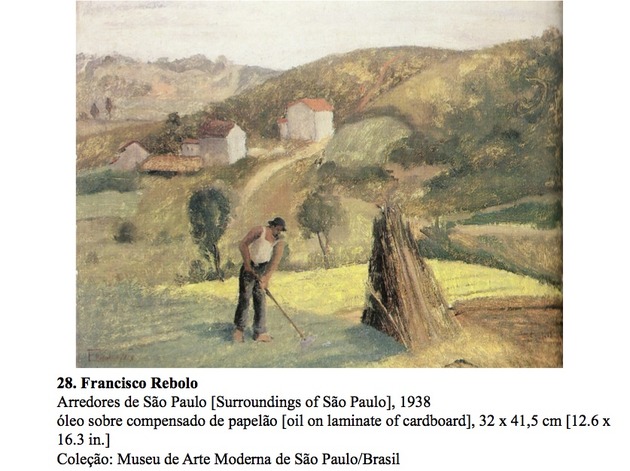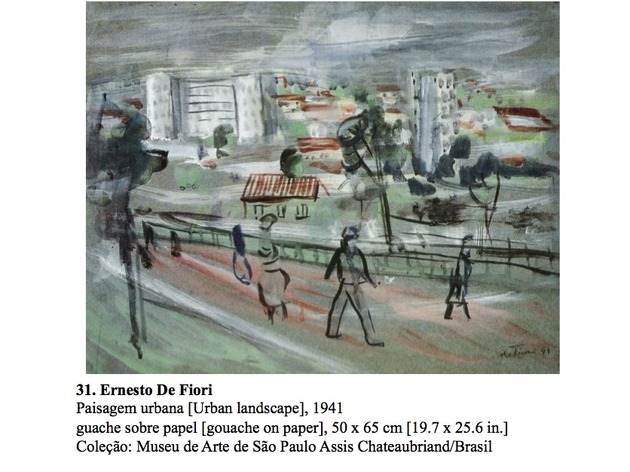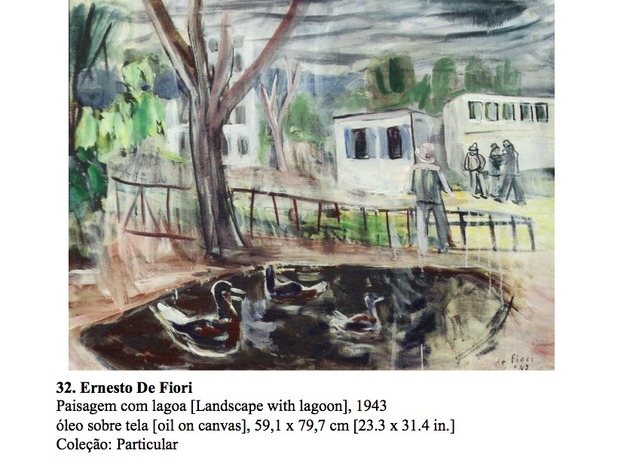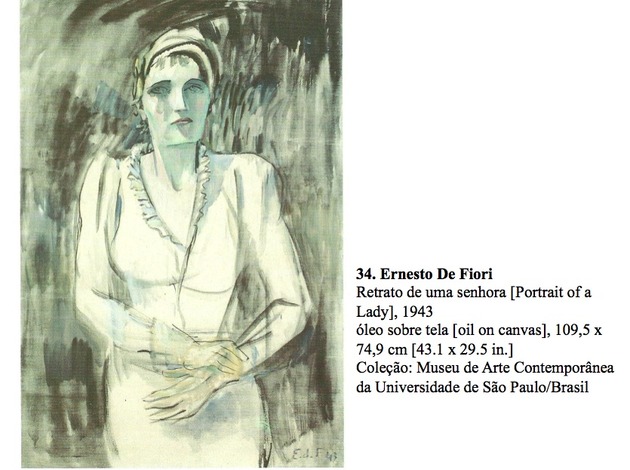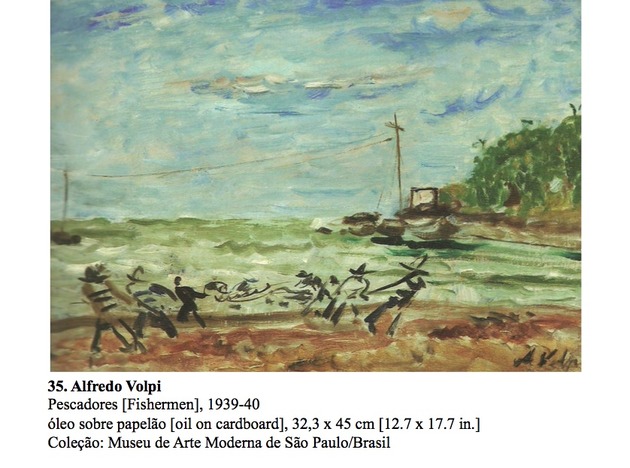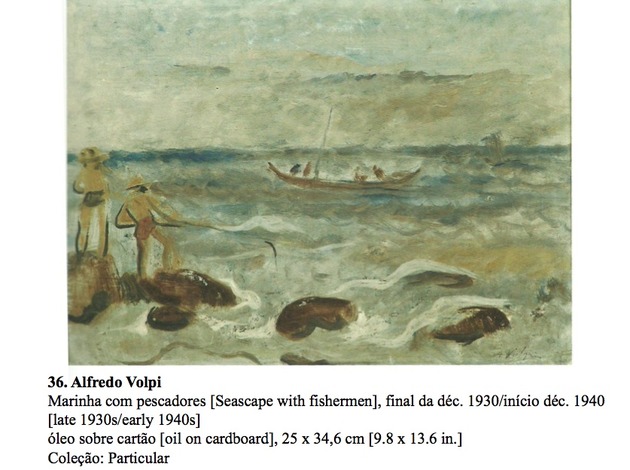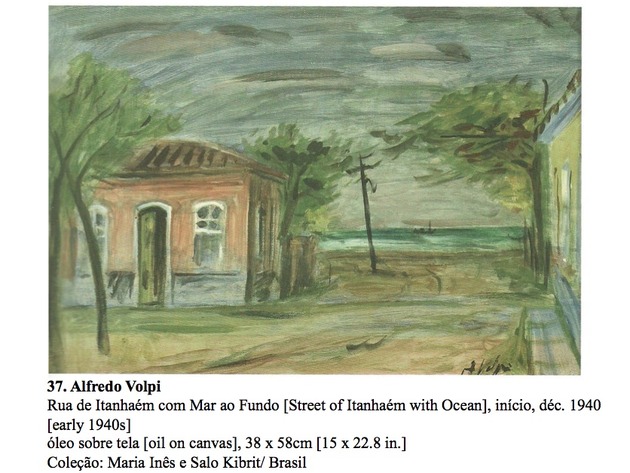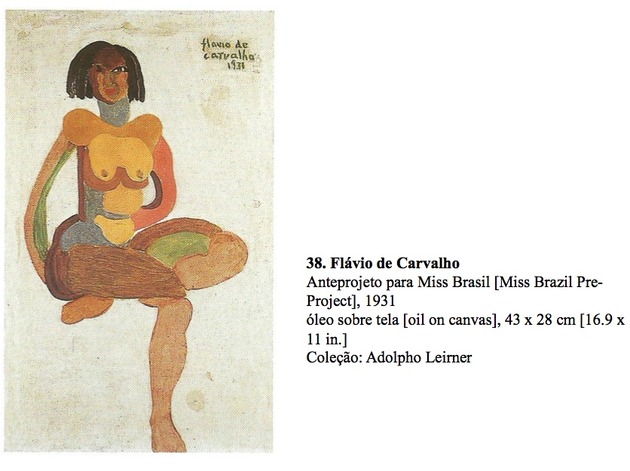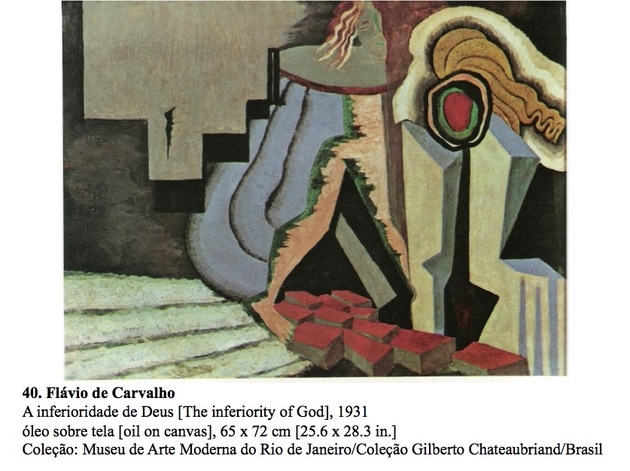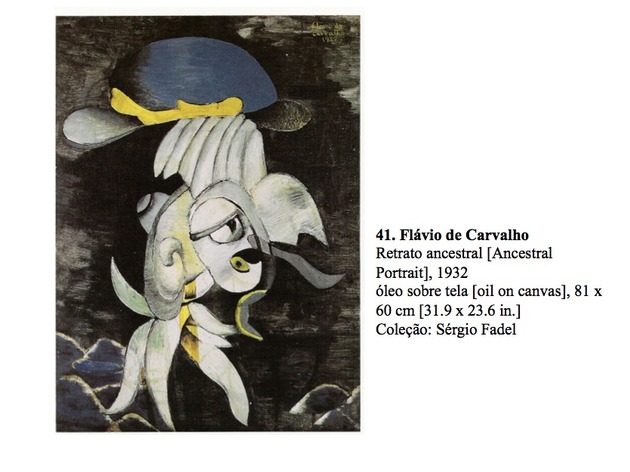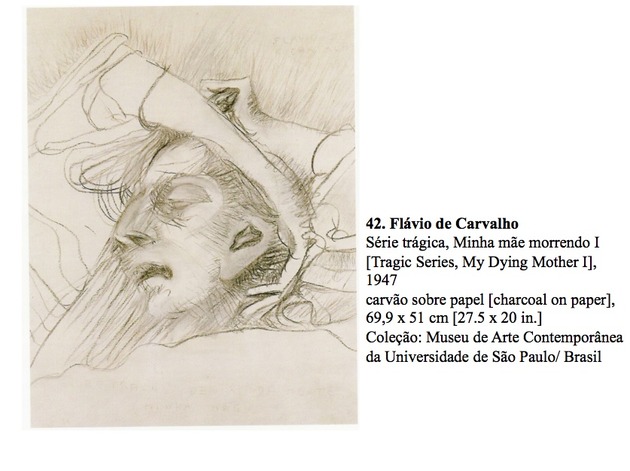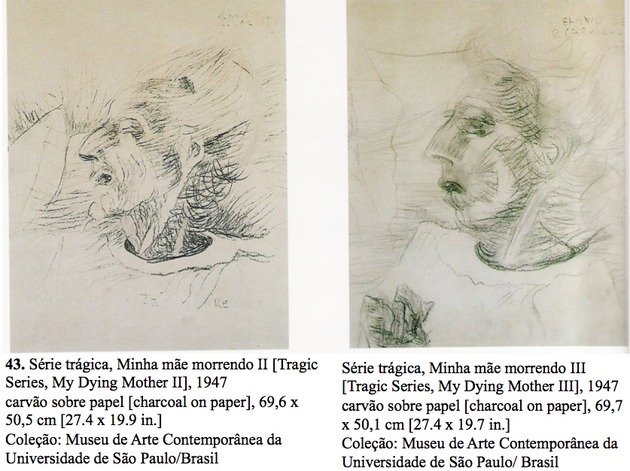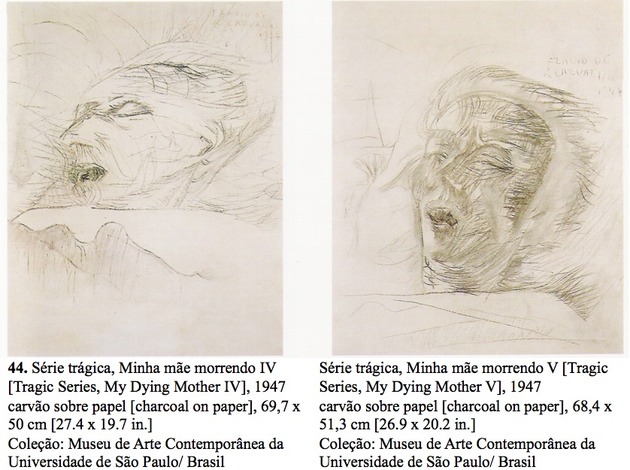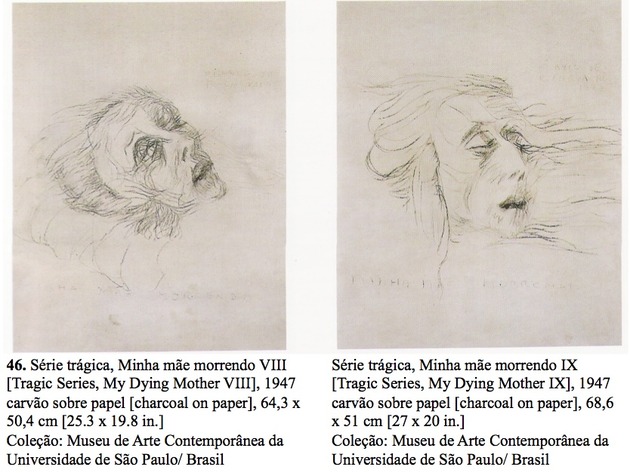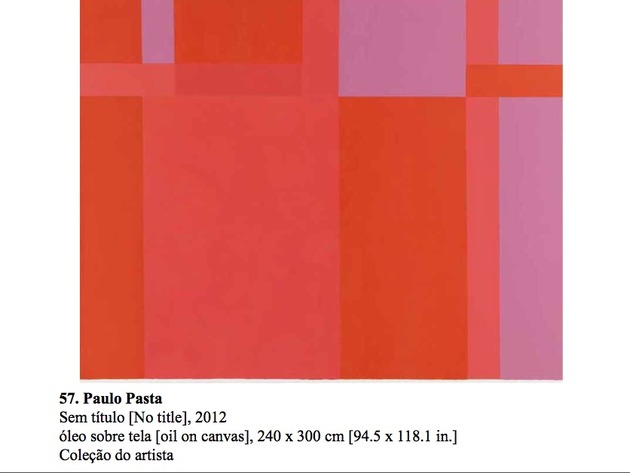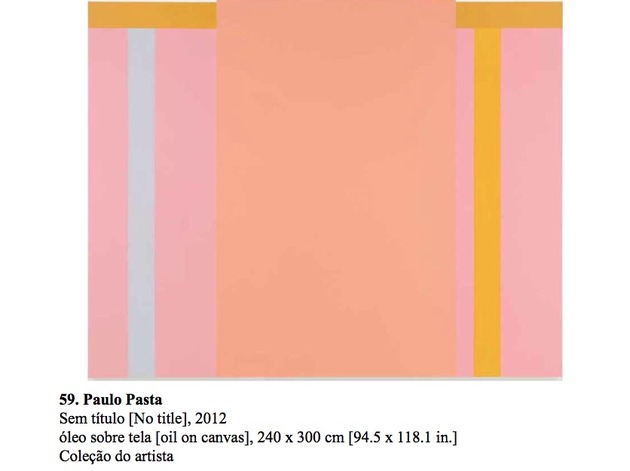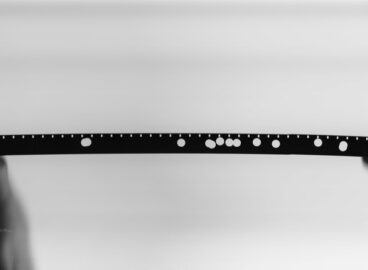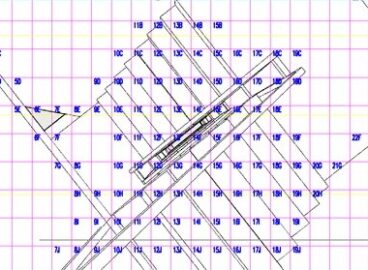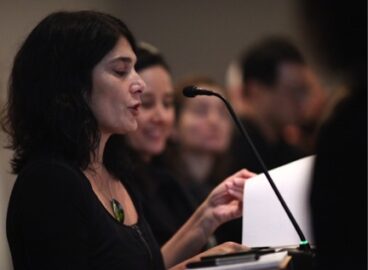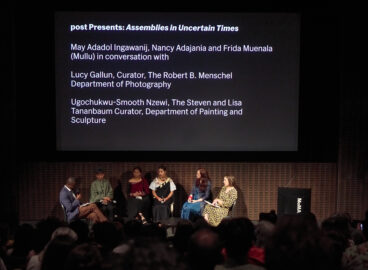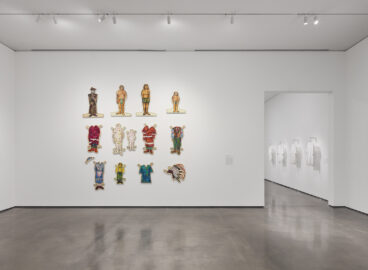What were the main issues at stake in Brazilian modernism? How did the necessities and demands of the national context shape the country’s modernist art practices in the twentieth-century? These questions are addressed by Tadeu Chiarelli, Director of the Museum of Contemporary Art – University of São Paulo, who surveys the major figures in Brazilian modern art from the early years of the century to Neo-Concrete and Post-Concrete innovations that continue into the present. Chiarelli explores the work of Anita Malfatti, Tarsila do Amaral, Lasar Segall, Emiliano di Cavalcanti, Cândido Portinari, Francisco Rebolo, Ernesto de Fiori, Alfredo Volpi, Flávio de Carvalho, Waldemar Cordeiro, Maurício Nogueira Lima and Nelson Leirner in the context of Concrete and Neo-Concrete art.
This text is adapted from a talk delivered at a C-MAP presentation at The Museum of Modern Art in June 2012.
In Brazil during the mid-twentieth century, artworks and aesthetic tendencies that emphasized rationality were highly esteemed, while supposedly nonrational currents were discredited. This situation, however, did not result from an inherent desire for order on the part of the Brazilian people, but from the influence of a segment of the local intelligentsia that made its belief in rationality an instrument for the establishment of an art that was both modern and uniquely Brazilian. Clearly, such influence was not wielded without opposition or compromise.
My intention here is to distinguish certain characteristics of modernism from those of Concretism, a movement that emerged in Brazil in the 1950s. To do so, I will first point out differences between modernism and Italian Futurism (often understood as exemplary of the European vanguard). I shall then describe the art scene in Brazil between 1920 and 1940, acknowledging both its conservative and progressive aspects. In the final part I will analyze the impact of Concretism on Brazilian art and its divergence in subsequent decades from earlier artistic tendencies in Brazil.
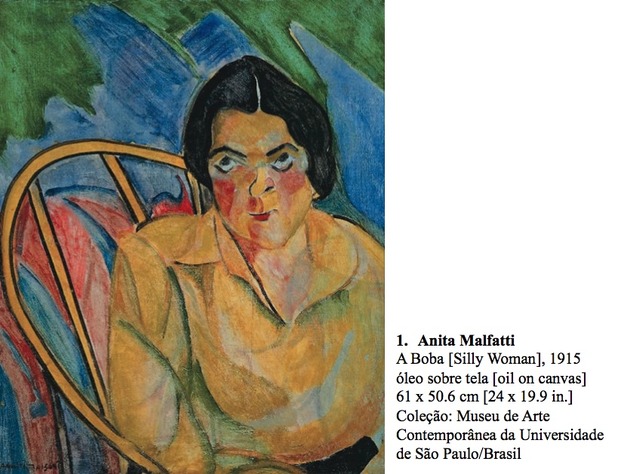
If we analyze the artistic production of Italian Futurism, we see that it proceeds in two directions that converge at a single point: attacking the most traditional conventions of European art and, at its most extreme, destroying them in an effort to break down the boundaries between art and life. In the first direction, one notes the intention to transform the traditional concepts of painting and sculpture by materializing, in the sphere of those modalities, sensations of modern life—particularly speed and new perceptions of time and space. In the second direction, the artistic product is replaced by the performance of transformative actions, in which art is submitted to and loses itself in life.1On Futurist poetry, see Annateresa Fabris, Futurismo: uma poética da modernidade (São Paulo: Editora Perspectiva/Edusp, 1987). See also Aurora F. Bernardini, ed., O futurismo italiano (São Paulo: Editora Perspectiva, 1980). The dilemmas of Brazilian modernists, however, were quite different. There was no desire to break with the grand tradition of European art—just the opposite. If the enemy to be fought was Brazilian painting of the nineteenth century—realist/naturalist or avowedly academic production—this did not entail questioning the roles played by painting and sculpture in the construction of modernity.2I consistently reduce the complexity of Brazilian visual production prior to the advent of modernism. Elsewhere I have dealt with the matter in greater detail. See Tadeu Chiarelli, Pintura não é só beleza (Florianópolis: Letras Contemporâneas, 2007), especially Chapter 10. Instead, the idea seemed to be to emphasize their importance as the means of spreading the ideology of the modernist group.
If the Futurists aimed to weaken those traditional art forms by confronting them with an experimental or openly destructive spirit, Brazilian modernists maintained tradition and did not venture far into the experimental realm.3For a discussion of those Brazilian artists who spent years at the margins of “official” Brazilian modernism, see my “Às margens do modernismo,” in Nelson Aguilar, ed., Bienal Brasil Século XX (São Paulo: Fundação Bienal de São Paulo, 1994). Reprinted in Tadeu Chiarelli, Arte internacional brasileira, (São Paulo: Lemos Editorial, 1997). Futurists opened a path between art and life, exploring new technologies (photography, radio, etc.); these issues were not addressed by Brazil’s modernists, at least not immediately.
Furthermore, if the Futurists declared the past dead and buried, killed off in favor of a new experimentalism that was international in character, Brazilian modernists renewed a demand from the previous century: to form a national art guided above all by representations of the Brazilian people. Meeting this demand imposed limits on the desire for renewal in the visual arts. In the first place, it excluded any artistic activity outside the parameters established by tradition; the disciplines of architecture, painting, and sculpture would thus be reinforced. (Unlike other Brazilian groups, the modernists of 1922 did not include the applied arts in their program.)4In parallel with the modernist movement, other groups of artists and intellectuals in Brazil reflected on the possibility of constructing a national art, beginning with the applied arts. See Angyone Costa, A inquietação das abelhas, (Rio de Janeiro: Pimenta de Mello & Cia., 1927). But, Brazilian art did possess a past to be recovered; it lay in Brazilian colonial production, where the major figures of the modernist movement perceived “typical” Brazilian artistic values.5On this topic, see Chiarelli, Pintura não é só beleza, especially Chapter 3.Another important fact was that the renewal that the modernists wished to confer upon art in Brazil imposed limits on the manner of producing paintings and sculptures because it demanded national themes and typical subjects. Modernist artists had no choice but to represent the “Brazilian subject.” Which meant this: Abstract art? Out of the question.
Such rules forced modernists to adopt clear strategies: when they looked to Europe in search of modern trends of moderate renewal, they encountered strands of postwar Europe’s “return to order,” which enjoyed considerable success on the Continent.
Aligning themselves with the most conservative currents of European art–and not with the more radical trends of the vanguard–meant that the movement could be “modern,” yet preserve its aspiration to be “national.” Finally, among the various approaches proposed for establishing a return to order was that of exploring local visual traditions. This avenue would allow Brazilian modernists to respond to demands for a typically national art while they consciously updated it.
The various versions of the European return to order were not adopted all at once, but rather were introduced gradually and mixed with the demands of the European vanguards.6It should be noted that the return to order emerged from within the historical European avant-gardes. The Brazilian situation, then, would reflect a problem of international dimensions. Conservative models of art from the period between the wars made their way to Brazil in the work of four artists considered to be the pioneers of modern art in the country: Anita Malfatti, Tarsila do Amaral, Lasar Segall, and Emiliano di Cavalcanti.
Anita Malfatti (1889–1964)
Malfatti was exposed to avant-garde currents in Berlin and New York during her stays in those cities between 1910 and 1916. Back in São Paulo in 1917, she sought to intervene in the debate on national art with works that evinced a singular kind of primitivism, one that combined Post-Impressionist characteristics with the grand tradition of European painting. If in works like A Boba (Silly woman, 1915) and A Mulher de cabelos verdes (Green-haired woman, 1915—16) her admiration for Expressionism and Futurism is evident, in Tropical (1917), the formal logic is modified. In this canvas, with its nod to Post-Impressionism, the allegorical dimension of the earth and the fertility of Brazilian flora are salient. The same atmosphere is senator in Índia (Native woman), 1917, in which Gauguin’s primitivism seems to permeate the Brazilian allegory.7Despite these incursions into the debate about what was national, still prior to the Week in 1922, as time passed Malfatti abandoned any further bruising intervention in the country’s artistic milieu. She remained silent until the 1950s, when the recovery of the “pioneer” modernists began in Brazil. By then in the last years of her life, Malfatti was exploring a primitivist mode of painting that garnered little attention compared to the interest that her early production had generated. For further information about Malfatti’s life and work, see Marta Rosseti Batista, Anita Malfatti no tempo e no espaço (São Paulo: IBM Brasil, 1985).
Tarsila do Amaral (1886–1973)
Tarsila do Amaral embraced modern painting when she associated herself with the major figures of the Week of Modern Art of 1922. These connections helped her to establish a singular position within the movement. She was one of the few artists who from 1920 to 1930 achieved a successful synthesis of modernism and nationalism. Drawing lessons from the work of Fernand Léger, whom she had known in Paris, Tarsila created flat, schematic figures that, like Léger’s, seem simultaneously to exist in three-dimensional space and to adhere to the picture plane.8For further information on the work of Tarsila do Amaral, see Aracy Amaral, Tarsila sua obra e seu tempo (São Paulo: Editora Perspectiva/Edusp, 1975), 2 vols. This can be seen in works like Estrada de Ferro Central do Brasil (Central Railway of Brazil) and São Paulo (Gazo), both from 1924, and O mamoeiro (The papaya tree) and A feira II (The market II), from 1925. In these paintings the Brazilian theme is elaborated on a pictorial grid, an armature well suited to organizing the ideal reality that each painting describes. This phase in the artist’s work became known as pau-brasil (brazilwood), an allusion to the Brazilian “primitive” period and a name also given to the aesthetic movement, led by Oswald de Andrade and Tarsila, which had significant resonance in São Paulo and Rio de Janeiro.9Oswaldo de Andrade’s “Pau Brasil Poetry Manifesto” outlined a poetry that was both indigenous to Brazil and viable for export, like the Pau Brasil tree that formed the foundation of Brazilian exports in timber at the time.
Tarsila’s pau-brasil paintings were well received by critics, but her subsequent antropofágica (cannibalistic) phase, was not. Indeed, while praised by intellectuals who were close to her, Tarsila’s antropofágia (cannibalism) was all but ignored by most others. The reason for this may be that the artist’s attachment to international currents such as Metaphysical painting and Surrealism, oriented toward the irrational, dissuaded critics from fully engaging with her new canvases, despite their unmistakably “primitive” and Brazilian spirit.
Lasar Segall (1891–1957)
Born in Russia and trained in Germany, Lasar Segall adapted quickly to the cultural atmosphere of São Paulo during his first years in Brazil (1923–28). This is evident in his readiness to take up the challenge then mobilizing the most restless critics and artists of São Paulo and Rio de Janeiro: creating a Brazilian art that was at the same time modern and “typical.”10On Segall’s art, see, among others, Tadeu Chiarelli, “Segall realista: algumas considerações sobre a pintura do artista,” in Roberta Coutinho, ed., Segall Realista (São Paulo: Centro Cultural Fiesp/Galeria de arte do Sesi, 2008), pp. 11ff.
Soon after his arrival, Segall was the subject of an article by Mário de Andrade, one of the leading figures of modernism. Andrade emphasized the fact that Segall, until then identified with the German avant-garde, had changed course and was now pursuing art linked to the real. Months later, writing about works Segall had made recently in São Paulo, Andrade said the artist’s paintings had become “a more real concept of reality, abandoning that mortifying and incessant tragedy that characterizes all his work prior to the Brazilian phase.”11For some years, Segall continued to search for formal synthesis in his paintings. Without abandoning the figure, he gradually set aside his fascination with the splendor of Brazil’s natural features and the diversity of its population. Only in the 1950s, near the end of his life, did he join the debate about abstraction then being waged in Brazil. He proceeded to paint landscapes in dialogue with the constructive art of the time, yet never gave up creating allusions to natural light.
If later Andrade would react negatively to this first stage of Segall’s Brazilian work, he was correct about the following point: the artist abandoned his earlier radicalism and applied close powers of observation to his surroundings, especially in his evocations of Brazil’s human landscape. To do so, he studied African masks, but without the radical intentions of Picasso. In paintings like Mulata com criança (Mestizo woman with child), Mulato I (Mestizo I), and Menino com lagartixas (Boy and gecko), all from 1924, Morro Vermelho (Red Hill), 1926, and Perfil de Zulmira (Zulmira in profile) and Bananal (Banana plantation) from 1927, Segall combines schematic geometries with analogical description. In only one of the aforementioned paintings—Morro Vermelho—has the background not been transformed into purely ornamental patterns. The artist merges in a single composition—which is first and foremost a description of the Brazilian environment—patterns of the first rebirth and of Africa.12Mário de Andrade. “Di Cavalcanti,” Diário Nacional, May 8, 1932. Reprinted in, Marta R. Batista et al., Brasil: primeiro tempo modernista (São Paulo: IEB-USP, 1972), p. 158.
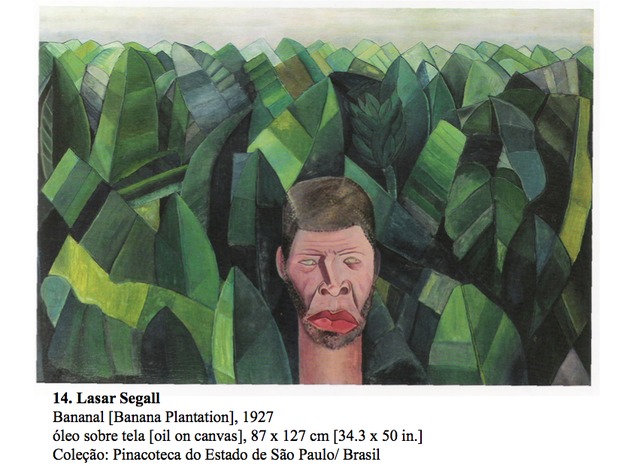
Emiliano di Cavalcanti (1897–1976)
In 1932 Mário de Andrade opined about the work of Di Cavalcanti:
Also that fidelity to the objective world . . . saved Di Cavalcanti from wasting time and squandering himself during the research on modernism. Cubist, Purist, Futurist theories passed by him without leading him astray. Di Cavalcanti knew how to take from them that which could enrich his technique and faculty for expressing his acid view of the world, to nimbly enrich himself without wasting time . . . Without tying himself down to any nationalistic thesis, he is always the most exact painter of national things. He didn’t confuse Brazil with its landscape; and instead of Sugar Loaf he gives us samba, instead of coconut trees, mulatto women, blacks, and carnivals.
On the one hand, this text leaves no doubt about the instrumental nature of Brazilian modernism’s interest in the European avant-garde; on the other, it exposes modernism’s realist substratum. Note how Andrade understands modernism as the artistic movement that changed the focus of the art of the time in a realist key: whereas previously art had recorded the indices of Brazil’s topography, flora, and fauna—Sugar Loaf, coconut trees, etc.—modernism concerned itself with recording the human landscape: samba, mulatto women, blacks, and carnival.
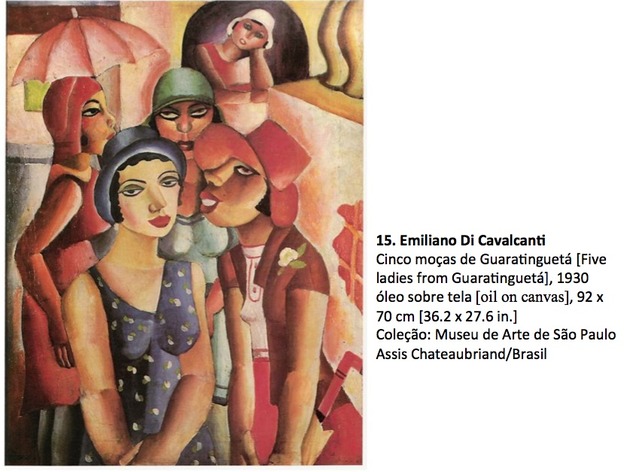
Cinco moças de Guaratinguetá (Five ladies from Guaratinguetá, 1930) is an ideal painting for introducing the work of Di Cavalcanti. It is a good-natured commentary on Picasso’s Demoiselles d’Avignon (1907). Di Cavalcanti appropriates that emblematic Cubist work, stripping it of its formal complexity and leaving only what it possesses of the conventional: the theme of prostitution. There remains a certain compression between figure and ground, but the abstracting, primitivizing devices are loosened to permit individual characterization of the figures, which represent the diversity of Brazilian society: from the white woman to the black woman, and passing through several skin tones from one to another. As Andrade observed, Di Cavalcanti wasted no time on avant-garde theories; he took from them only the elements he needed to carry out his expressive deformations of images.
In works like Devaneio (Reverie, 1927) and A mulher e o caminhão (The woman and the truck, 1932), the artist appropriates avant-garde procedures from Cubism, Surrealism, and Metaphysical painting to portray Brazilian subjects. Nu deitado (Reclining nude, 1930s) affects a more traditional, allegorical lilt. The curves of the woman’s body are echoed in the background of the painting, forming a Brazilian landscape, ever replete with sensuality and mystery.
Cândido Portinari (1903–1962)
Modernism tempered by desires for structural order and figurative representations of “the people” would be enhanced by the work of an artist who emerged after the modernists of 1922: Cândido Portinari. The son of immigrants, Portinari attended the National School of Fine Arts (originally the Imperial Academy of Rio de Janeiro) in the 1920s. At that time, the institution was dominated by conventional academic teaching that accommodated dialogues with naturalism and Post-Impressionism. Portinari can be understood as the strongest link between the tradition of the old Imperial Academy and the European return to order between the wars, understood as modern art.
Portinari traveled to Europe in 1928. During his year abroad, his encounters with works by artists linked to the return to order proved to be a decisive influence on his production of the next two decades. His academic training as well as exposure to the more conventional art then being produced in Europe allowed him, once he returned to Brazil in 1930, to make paintings that met the previous generation’s demand for art that was at the same time modern and “typical.” To achieve this objective, Portinari effected rational structuring of pictorial space modeled on precedents from the Italian Renaissance as well as certain post-Cubist solutions. He superimposed onto this rational structure modular human forms, exalting the figure of the Brazilian worker as a key protagonist in the country’s history. Such strategies are visible in Café (Coffee, 1935) and in the seven paintings in the Ciclos Econômicos (Economic cycles) series: Cana (Sugarcane), Pau-brasil (Brazilwood), Cacau (Cocoa), Ferro (Iron), Borracha (Rubber), Café (Coffee), all from 1938, and Carnaúba (Carnaúba palm tree, 1944).13Recognized nationwide as the great Brazilian painter of the 1930s and 1940s, Portinari sought at the end of his life to reconcile his early figurative work with abstract experimentation.
Francisco Rebolo (1902–1980), Ernesto di Fiori (1884–1945), and Alfredo Volpi (1896–1988)
The mild climate of 1920s modernism would change with the return to order in the early 1930s, when Candido Portinari’s art gained prominence and Lasar Segall’s work arrived at its maturity. The quality of the productions of each, revealed in the refinement of their techniques and the safe distance they kept from the experimentation of the avant-gardes, served as models for the generation that emerged in that era.
In São Paulo, a group of artists, most of them from working-class and immigrant backgrounds, gradually gained strength. Neither “modern” nor “academic,” they created works unconnected to nationalism and concerned only with the sensitive recording of the daily lives of the underclasses. In the works of Francisco Rebolo – Cena de jogo num bar (a taverna) (Card game at a bar/the tavern) and Arredores de São Paulo (Surroundings of São Paulo), both from 1938 – as well as in Alfredo Volpi’s Paisagem com vacas (Landscape with cows) and Mogi das Cruzes, both from around 1932 – influences of French Impressionism, Post-Impressionism, and the Italian Macchiaioli, filtered through the return to order in that country, are plain to see. The urban landscape, the clamor of the crowds, held no interest for these urban-dwelling artists, ever attentive to the silence of the outskirts and the shoreline not far from São Paulo.
Their attraction to serenity was challenged in 1936 with the arrival of Ernesto De Fiori, an Italian-German artist who had achieved recognition as a sculptor in Europe. In Brazil he would become known as the artist who revamped the canons of painting in São Paulo’s laid-back art scene. De Fiori’s Paisagem urbana (Urban landscape, 1941), Paisagem com lagoa (Landscape with lagoon, 1943), O jantar (The dinner, 1942), and Retrato de uma senhora (Portrait of a lady, 1943) demonstrated that a gesture could transform a painting from a measured space of faithful representation into an expression of the artist’s subjective sense of reality. As Walter Zanini has stated, under de Fiori’s influence, Alfredo Volpi would develop into one of Brazil’s most important painters of the twentieth century.14Walter Zanini, A arte no Brasil nas décadas de 1930/40 (São Paulo: Nobel, 1991). Volpi’s Pescadores (Fishermen), Marinha com pescadores (Seascape with fishermen), and Rua de Itanhaém com mar ao fundo (Street of Itanhaém with ocean), all from the late 1930s and early 1940s, show the impact of de Fiori’s gestural freedom.
Flávio De Carvalho (1899–1973)
De Fiori was not the first or only artist in those years to demonstrate that painting could go beyond the need to represent the “typically” Brazilian man, or the understanding of painting as a more or less scrupulous reproduction of the real. Flávio de Carvalho, an artist, intellectual, and architect residing in São Paulo was also doing so, producing works in several disciplines. It is interesting here to stress his activities in painting and drawing, for they serve as a counterpoint to what was then the dominant current of structuring the concrete or ideal Brazilian reality.
De Carvalho’s sole foray into the debate on modern, “typical” Brazilian art is his painting Anteprojeto para Miss Brasil (Miss Brazil pre-project, 1931). At a time when it was unthinkable for Brazilian authorities to allow a black woman to represent the country in an international beauty contest, the figure of a black woman painted in colors in which green and yellow (Brazil’s national colors) predominate was in itself a provocative symbol. Interest in the work lay not only in the theme and the colors, but also, and above all, in Carvalho’s approach to making the picture. It is plain to see that he has painted the figure directly over the background, which itself has been left partially unpainted, emphasizing the two-dimensional nature of the picture plane.
This concern with producing paintings without any prior sketches and leaving obvious signs of his action on the canvas is evident in all of Carvalho’s works. His emphasis on gesture demonstrates his adherence to procedures that, absorbed into Surrealist and Expressionist practices, were treated with a singularity that make it difficult to associate these paintings of his with others by his colleagues. Works like Nu feminino deitado (Mulher depreciada recolhe-se em posição uterina) (Reclining female nude/Debased woman lies down in uterine position), A inferioridade de Deus (The inferiority of God), both from 1931, and Retrato ancestral (Ancestral portrait,1932), present perhaps the most visceral produced in the country during that decade. In them, the primacy of gesture obviates any interest in the descriptive. The artist’s emphasis on action would attain an unexpected apogee in Série trágica: Minha mãe morrendo (Tragic series: My dying mother), the series of nine drawings Carvalho made while witnessing the death of his mother in 1947. The expressive drawings attest to the performative dimension of Carvalho’s poetics.
Concretism and Neo-Concretism
Apart from a few daring aesthetic initiatives, such as those of de Fiori and de Carvalho, the Brazilian art scene of the 1930s and 1940s was dominated by the international return to order. Signs of change began to appear at the end of the World War II. Not only was there a new generation of artists seeking to revive certain movements of the European avant-garde, but also new art institutions were springing up.15On this topic, see Aracy Amaral, Arte para quê? A preocupação social na arte brasileira 1930-1970 (São Paulo: Nobel, 1984), especially Chapter 4. In São Paulo, in 1947, the Museum of Art (MASP) was created, focusing on collections and exhibitions of artistic production in general; in 1949, in that same city, the “old” Museum of Modern Art. In 1948, in Rio de Janeiro, the Museum of Modern Art was inaugurated. At the start of the following decade, in 1951, the first Bienal of the Museum of Modern Art of São Paulo was held.
The founders of those new institutions shared the goal of internationalizing Brazil. This aim is reflected in the title of the inaugural exhibition at São Paulo’s “old” Museum of Modern Art: “From Figuration to Abstractionism.” Organized by the Belgian critic Leon Degand, the museum’s first director, the exhibition presented the Brazilian public with a supposedly irrefutable fact: that art was advancing “naturally” from the figurative to the abstract. Despite protests from several renowned artists and other public figures, this view won the support of a majority of local artists and critics.16By “the old Museum of Modern Art of São Paulo,” I mean the institution that was called The Museum of Modern Art of São Paulo from 1949 to 1963. That final year marked the end of the institution as it had been known: its holdings were donated to the University of São Paulo, and its name was changed to Museum of Contemporary Art of the University of São Paulo. I refer to the institution that began its activities in 1968 as “the new Museum of Modern Art of São Paulo” because I feel that, rather than the revival of the old institution, this date marked the birth of a new one, with different purposes. See Amaral, Arte para quê?, especially Chapter 6. In the vigorous debate that ensued about which nonfigurative direction young Brazilians should take, constructive trends initially emerged victorious, their rationalist approach arousing interest in artists and intellectuals.
It is true that in the early 1950s the country was starting to experience rapid development, understood by many as the final opportunity for the nation to achieve modernity. Thus the projective dimension, visible in the production of Ruptura (Rupture) and Frente (Front), two Concretist groups, was appropriate to the climate of transformation in Brazil, which would reach its height with the inauguration of Brasília, the new capital, in 1960.
The Concrete art movement suffered a shock in 1959, when Neo-Concrete art emerged in reaction to its orthodoxy. If the Concretists aimed at transforming the future, the Neo-Concretists wished to establish in Brazil an art that would transform the present. The works of Hélio Oiticica, Lygia Pape and Lygia Clark would receive wide international recognition for reformulating and surpassing the idealistic precepts of Concrete Art, opening new possibilities for art. I believe, however, that Brazil’s Concrete movement should not be considered solely as having set the stage for Neo-Concretism. The effects of the concrete experience in Brazil can hardly be overestimated.
Concretism emerged as an alternative to the modern, nationalist art that had held sway in Brazil since the 1920s and embraced three often overlapping purposes and themes: the formation of identity myths; the elevation of the worker as national symbol; and the condemnation of the country’s social ills. Even if these themes were linked rational compositional structures (recall Tarsila do Amaral and Cândido Portinari), Concretists viewed specifically Brazilian subject matter as a hindrance in realizing a transformative art. By choosing a path of constructivist rationalism, Concretists believed they were steering Brazilian art clear of localism and toward objective and universal paradigms.
As the first consequence of this stance, they developed works that awoke the public to elements proper only to the works of art themselves. They directed attention to the fact that painting, even if emanating a rigor that could be extended to life, consists exclusively of plane, line, and color.
If the modernists’ works consistently referred to external issues, the Concretists’ emphasized the structural reality of their productions and the direct relation they established with the viewer, unmediated by concepts separate from art itself. This relationship underlined the importance of the “here and now” and of the act of seeing. The Concrete movement thus introduced into Brazil the formal bases of international modernism. Establishing this new mode required the members of the group to radicalize their positions—to stipulate methods and procedures to which all followers should adhere. It was precisely these rigid rules that generated the Neo-Concretist break and contributed to the demise of the movement.
As the critic Ronaldo Brito has pointed out, two distinct trends emerged within Neo-Concrete Art, and both had strong connections to Concrete Art: in one, which includes the productions of Willys de Castro, Hércules Barsotti, and, “to a certain point,” Amílcar de Castro, he detects “a sensitizing of the work of art,” signifying “an effort to preserve its specificity”; in the other, exemplified by the art of Hélio Oiticica, Lygia Clark, and Lygia Pape, he finds an impulse that, “whether conscious or not, sought to break the constructivist postulates . . . ” a type of production that effected a “dramatization of the work, its reason for being, and which placed in check the established statute of art.”17Ronaldo Brito, Neoconcretismo. Vértice e ruptura do projeto construtivo brasileiro (Rio de Janeiro: FUNARTE/INAP, 1985), p. 51.
It could be said that the Neo-Concretists injected semantic content into the formal structure of Concrete art. If in the “sensitive” Neo-Concrete strain, content was kept within the limits of self-referential artistic production, in the “dramatic” strain, content was exploded both in the self-referential dimension and in the focused concentration on the viewer’s perception. Oiticica, Clark, and Pape proposed a total relationship between artwork and viewer, art and life.
Although Neo-Concretism perpetuated the most radical triumphs of the Concrete legacy, the decline of the earlier movement’s orthodoxy would encourage the emergence of other new artistic developments in Brazil, two of them the respective products of former leaders of the Concrete movement, Waldemar Cordeiro and Maurício Nogueira Lima.
Waldemar Cordeiro (1925–1973) & Maurício Nogueira Lima (1930–1999)
Pressed by criticism of his radicalism as head of the São Paulo Concretists and mindful of the political situation brought about by the military coup of 1964, Waldemar Cordeiro looked for alternatives beyond Concretism. He developed a series of works that synthesized the rational structure of the Concrete aesthetic and the semantic dimension of Pop art. The work O beijo (The kiss), 1967, demonstrates this synthesis; onto a moving mechanical background that reproduces the modernist grid, the artist glued an image of Brigitte Bardot’s lips taken from a photograph by Richard Avedon.
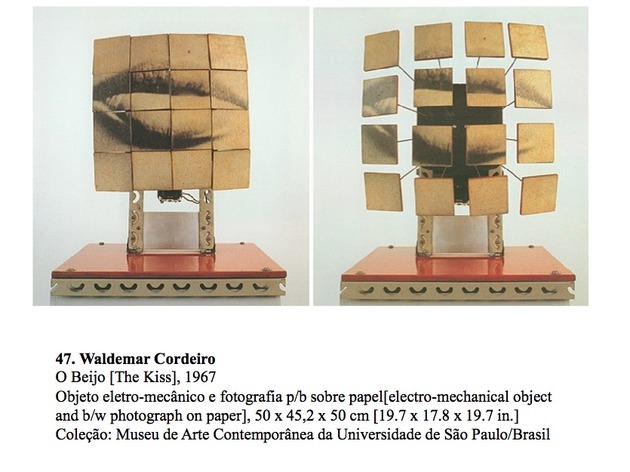
This kind of immersion in the quotidian, the cultural industry, and the political moment of Brazil are evident, too, in Maurício Nogueira Lima’s Não vire à esquerda (Don’t turn left), 1964. Using a similar grid structure, Lima established a poetic map of São Paulo that, ironically emphasizing the reactionary Brazilian Manichaeism of the period, divides the city into “right” and “left”—the same strategy that would lead to the military coup later that year.
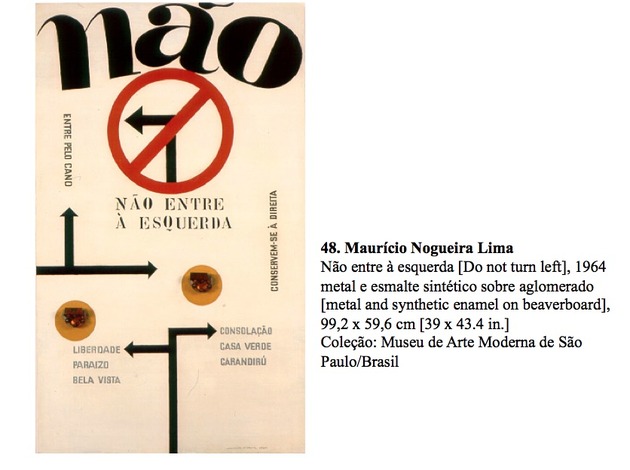
Claudio Tozzi, a former student of Lima’s then at the start of his career, presented a similar type of synthesis in works like USA e abusa (Use and abuse – a punning title in which the Portuguese verb “use” also spells out the initials of the United States), 1966, Guevara vivo ou morto (Guevara alive or dead), 1967, and Multidão (Crowd), 1968. In these pieces, the modernist grid is associated with scathing images of national and international import, which flood that organizing structure with new meanings.
Nelson Leirner (born 1932)
Any discussion of the triumph over concrete rationalism must highlight the work of Nelson Leirner, the first artist to develop a poetics shaped entirely by the need to challenge the institutionalization of the Brazilian art circuit then forming. To do so, he followed two parallel paths simultaneously: in one he would develop a series of works that alert viewers to the fact that they are part of an art system in which their own roles were determined long before they entered the exhibition space. It seems to me that the work Você faz parte II (You are a part of it II), 1964 is emblematic of this aspect of Leirner’s work. The installation features gigantic keys hanging in grid formation, recalling the Concretist rationalism of the previous decade, in an exhibition space filled with mirrors that reflect not only the viewer but the institution itself, bringing them both into the picture.

Leirner’s other pursuit was the demystification of the work of art as an object to be acquired and preserved as luxury merchandise. Emblematic of his work in this field is the Happening that concluded the artist’s 1967 show at REX Gallery & Sons Exposição-não-exposição (Exhibition/non-exhibition) in São Paulo. At a certain moment the lights went out, and spectators were invited to take the works in the exhibition away with them. Leirner had fastened the pieces securely to the walls and floor, making their removal difficult, but that did not prevent visitors from taking them home. Continuing his efforts to desanctify art, the artist published texts in newspapers, instructing readers on how to create their own examples of works he had conceived.
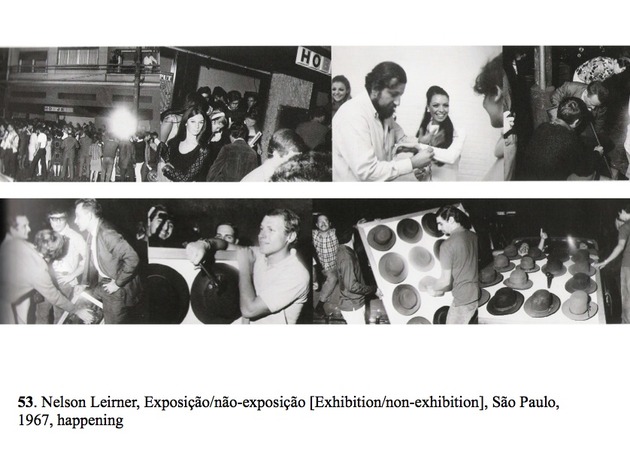
Leirner’s works that destabilize the laws governing art and its circuit preceded those of artists such as Cildo Meireles and Waltércio Caldas, who would emerge in the 1970s. Meireles and Caldas deconstructed the traditional model of the art circuit, demonstrating their separation from both the exaggerated and uncritical realism of Concretism and the often merely cathartic character assumed by “dramatic” Neo-Concretism.
To conclude these thoughts on the impact of the Concrete experience on Brazilian art, I call attention to the problem of painting, returning to the work of Alfredo Volpi. When Concrete Art emerged in the 1950s, Volpi was already a mature artist. His production grew increasingly consistent starting in the 1930s, when he achieved a synthesis of spatial order and gestural impulse combining color and reductive figuration.
Despite his maturity, he was open to the influences of Concrete Art from the time he was first exposed to it. In Bandeirinhas (Little Flags), 1958, Portais e Bandeirinhas (Portals and Little Flags), 1960 and Mastros (Poles), late 1960s, Volpi shows great agility in liberating the dominance of color by revealing the two-dimensional structure of the canvas. Far from Concretist orthodoxy, the artist would productively renew his early interest in action upon material during his later years, always beginning with structures to serve as bases for the play of colors.
A reference for several Brazilian artists, Volpi’s work has been gaining new significance through the production of Paulo Pasta (born 1959), a painter in mid-career. Pasta retraces Volpi’s path to a certain degree; this can be seen especially in his interest in the interchangeable character of colors. In more recent works, the artist radicalizes that proposal by introducing same joy of painting evident in the work of the older artist. The works of both attest to the possibility of persisting with the rational character of the work of art so long as it does not lead the artist to neglect his capacity for expression.
- 1On Futurist poetry, see Annateresa Fabris, Futurismo: uma poética da modernidade (São Paulo: Editora Perspectiva/Edusp, 1987). See also Aurora F. Bernardini, ed., O futurismo italiano (São Paulo: Editora Perspectiva, 1980).
- 2I consistently reduce the complexity of Brazilian visual production prior to the advent of modernism. Elsewhere I have dealt with the matter in greater detail. See Tadeu Chiarelli, Pintura não é só beleza (Florianópolis: Letras Contemporâneas, 2007), especially Chapter 10.
- 3For a discussion of those Brazilian artists who spent years at the margins of “official” Brazilian modernism, see my “Às margens do modernismo,” in Nelson Aguilar, ed., Bienal Brasil Século XX (São Paulo: Fundação Bienal de São Paulo, 1994). Reprinted in Tadeu Chiarelli, Arte internacional brasileira, (São Paulo: Lemos Editorial, 1997).
- 4In parallel with the modernist movement, other groups of artists and intellectuals in Brazil reflected on the possibility of constructing a national art, beginning with the applied arts. See Angyone Costa, A inquietação das abelhas, (Rio de Janeiro: Pimenta de Mello & Cia., 1927).
- 5On this topic, see Chiarelli, Pintura não é só beleza, especially Chapter 3.
- 6It should be noted that the return to order emerged from within the historical European avant-gardes. The Brazilian situation, then, would reflect a problem of international dimensions.
- 7Despite these incursions into the debate about what was national, still prior to the Week in 1922, as time passed Malfatti abandoned any further bruising intervention in the country’s artistic milieu. She remained silent until the 1950s, when the recovery of the “pioneer” modernists began in Brazil. By then in the last years of her life, Malfatti was exploring a primitivist mode of painting that garnered little attention compared to the interest that her early production had generated. For further information about Malfatti’s life and work, see Marta Rosseti Batista, Anita Malfatti no tempo e no espaço (São Paulo: IBM Brasil, 1985).
- 8For further information on the work of Tarsila do Amaral, see Aracy Amaral, Tarsila sua obra e seu tempo (São Paulo: Editora Perspectiva/Edusp, 1975), 2 vols.
- 9Oswaldo de Andrade’s “Pau Brasil Poetry Manifesto” outlined a poetry that was both indigenous to Brazil and viable for export, like the Pau Brasil tree that formed the foundation of Brazilian exports in timber at the time.
- 10On Segall’s art, see, among others, Tadeu Chiarelli, “Segall realista: algumas considerações sobre a pintura do artista,” in Roberta Coutinho, ed., Segall Realista (São Paulo: Centro Cultural Fiesp/Galeria de arte do Sesi, 2008), pp. 11ff.
- 11For some years, Segall continued to search for formal synthesis in his paintings. Without abandoning the figure, he gradually set aside his fascination with the splendor of Brazil’s natural features and the diversity of its population. Only in the 1950s, near the end of his life, did he join the debate about abstraction then being waged in Brazil. He proceeded to paint landscapes in dialogue with the constructive art of the time, yet never gave up creating allusions to natural light.
- 12Mário de Andrade. “Di Cavalcanti,” Diário Nacional, May 8, 1932. Reprinted in, Marta R. Batista et al., Brasil: primeiro tempo modernista (São Paulo: IEB-USP, 1972), p. 158.
- 13Recognized nationwide as the great Brazilian painter of the 1930s and 1940s, Portinari sought at the end of his life to reconcile his early figurative work with abstract experimentation.
- 14Walter Zanini, A arte no Brasil nas décadas de 1930/40 (São Paulo: Nobel, 1991).
- 15On this topic, see Aracy Amaral, Arte para quê? A preocupação social na arte brasileira 1930-1970 (São Paulo: Nobel, 1984), especially Chapter 4.
- 16By “the old Museum of Modern Art of São Paulo,” I mean the institution that was called The Museum of Modern Art of São Paulo from 1949 to 1963. That final year marked the end of the institution as it had been known: its holdings were donated to the University of São Paulo, and its name was changed to Museum of Contemporary Art of the University of São Paulo. I refer to the institution that began its activities in 1968 as “the new Museum of Modern Art of São Paulo” because I feel that, rather than the revival of the old institution, this date marked the birth of a new one, with different purposes. See Amaral, Arte para quê?, especially Chapter 6.
- 17Ronaldo Brito, Neoconcretismo. Vértice e ruptura do projeto construtivo brasileiro (Rio de Janeiro: FUNARTE/INAP, 1985), p. 51.

